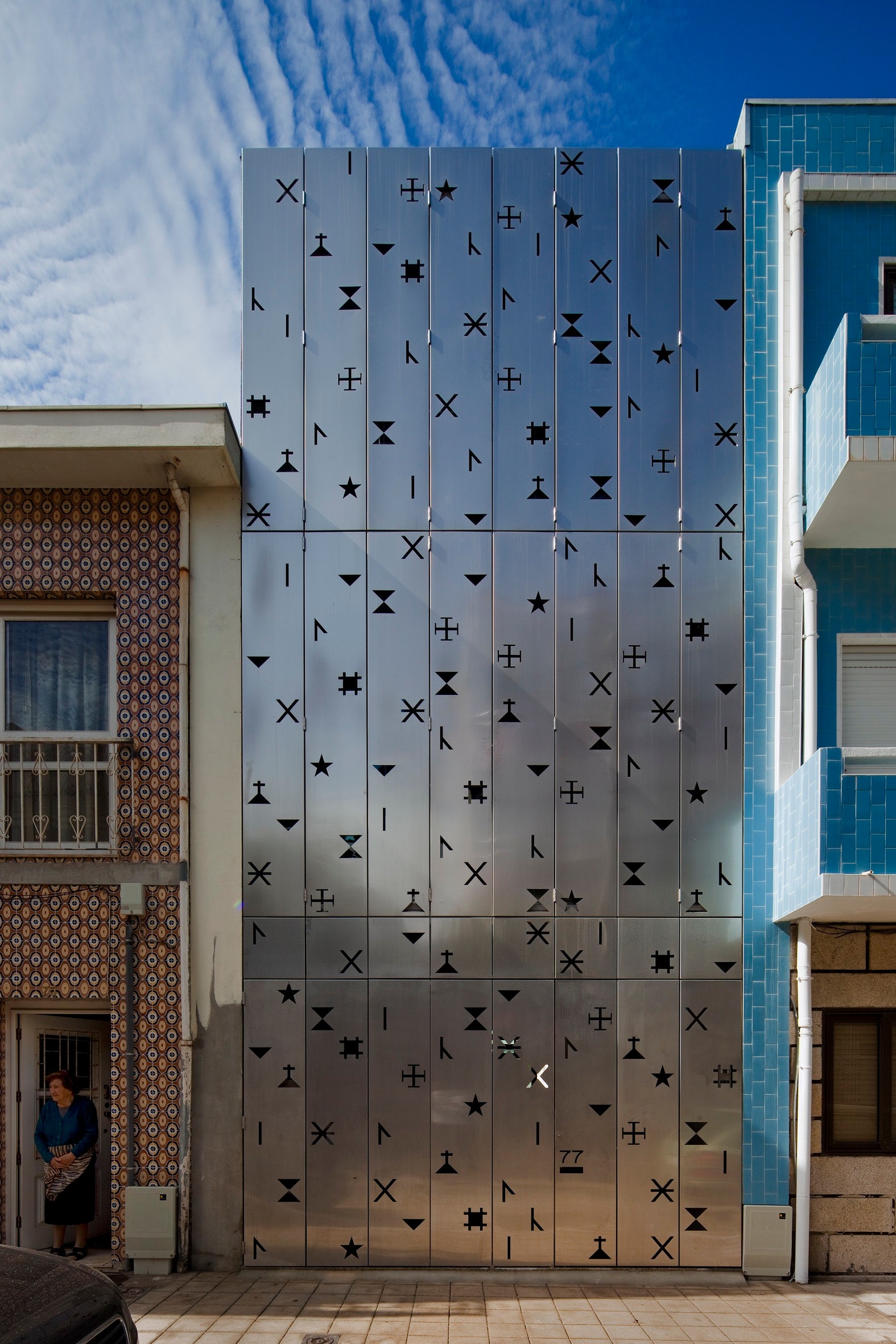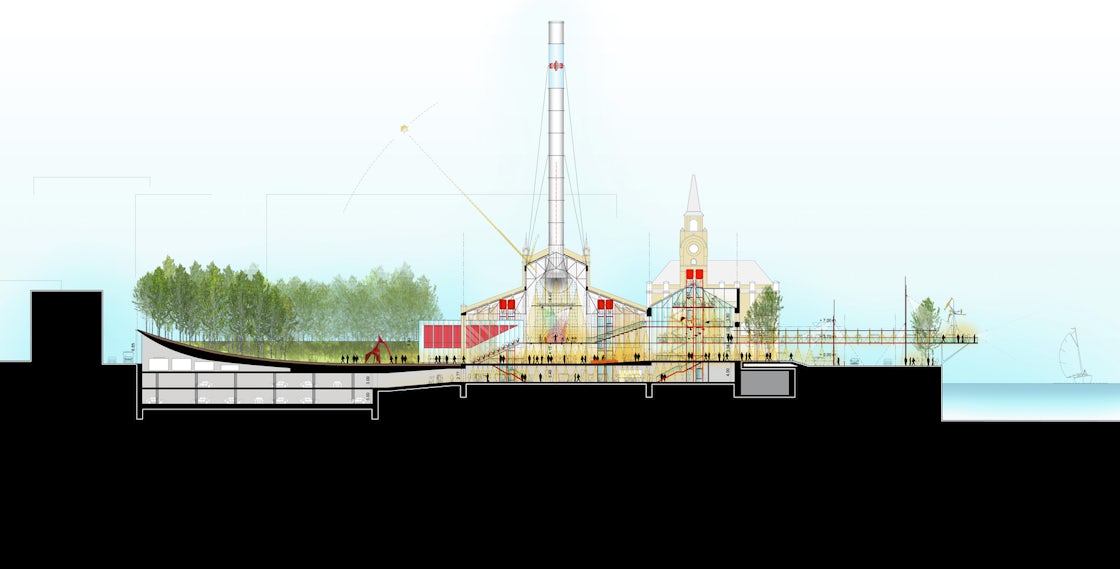Metals and composites are nothing new in architecture. Used throughout millennia for joinery, cladding, and reinforcement, these materials provide security and rigidity to structures worldwide. Precious metals like gold and silver continue to be used for decoration and adornment, forming sculptural details and shining embellishments. Our understanding of metals has evolved over time, and we’ve learned to create powerful alloys like steel and bronze that freed our floor plans and gave rise to skyscrapers. The way we value metals has also changed. While we used to believe a metal like aluminum was rare because of difficulties extracting and refining it, we later discovered its overwhelming abundance in the Earth’s crust. As our understanding of metals has grown, so too have the capabilities for creating innovative building materials and new façade assemblies.
The first article in a three-part series on metallic architecture, this collection features silver façades from the Architizer database. Whether established by color or by material composition, the projects explore the lustrous, reflective nature of metallic skins and their formal possibilities. A range of scales and programs are represented, from residential to commercial projects, and from small houses to large cultural facilities. While each design tackles unique environmental conditions, all the projects emerged through studies on the surrounding context and broader conceptual ideas. Showcasing various levels of porosity and fenestration, the façades examine acoustics, reflections, and symbology. Together, the eight designs demonstrate contemporary approaches to creating novel building envelopes.

© Peter Aaron/Esto

© Peter Aaron/Esto
Pound Ridge House by KieranTimberlake, Pound Ridge, N.Y., United States
This metallic retreat was design as a “house in the woods,” a place to feel the presence of the surrounding forest. The project was created on its boulder-strewn ridge site, carefully sited within steeply sloped glacial terrain. Three shifting volumes were snugly placed between the rock enclosures and were clad with a silvery façade that reflects its context.

© Ed Reeve

© Adjaye Associates
Silverlight by Adjaye Associates, London, United Kingdom
Silverlight was created as a new-build home that carefully responds to its urban context. Responding to adjacent volumes and formal lines, the building uses a metallic aluminum cladding on the north façade. With few openings, this face helps block high levels of traffic noise while also remaining bright and inviting.

© OFIS architects, SADAR + VUGA, dekleva gregoric architects, Bevk Perović arhitekti

© OFIS architects, SADAR + VUGA, dekleva gregoric architects, Bevk Perović arhitekti
The Cultural Center of European Space Technologies by Bevk Perović arhitekti, SADAR + VUGA, OFIS architects, and dekleva gregoric architects, Vitanje, Slovenia
This innovative cultural center was created as a social hub in Vitanje, Slovenia. Conceptually, the structure was designed around ideas proposed by Herman Potocnik Noordung, the first theoretician of space. The building takes its shape from the habitation wheel of the first geostationary space station, a form described by Noordung in 1929. Housing cultural, social, and scientific activities, the monolithic concrete project includes a delicate metal façade that surrounds and encircles its inner spaces.

© Aranguren + Gallegos Arquitectos

© Aranguren + Gallegos Arquitectos
ABC Centre by Aranguren + Gallegos Arquitectos, Madrid, Spain
Created as a new Drawing and Illustration Centre, this project symbolizes the artistic culture of Madrid. Designed as part of an old, historical factory building, the structure includes cafeteria space, a patio, atrium, and a headquarters area for the new institution. The impressive metallic façade was built with blue annealed steel in a matte-gray shade, formed as a lustrous, geometric addition to the old factory.

© dIONISO LAB

© dIONISO LAB
House 77 by dIONISO LAB, Povoa de Varzim, Portugal
The simple design of House 77 references its context, where the sea and fishing are profound elements of urban life. The interior of the building was created with half-floors, with private areas on “superior” levels and social areas on “inferior” levels. The structure’s east façade is covered in stainless steel panels perforated with “siglas poveiras” or symbols, elements that were used to mark fishing belongings.

© FR-EE/Fernando Romero Enterprise

© FR-EE/Fernando Romero Enterprise
Soumaya Museum by FR-EE/Fernando Romero Enterprise, Mexico City, Mexico
Housing a large private art collection, the Soumaya Museum was designed to reflect the eclectic taste of the museum’s collector while standing as a contemporary building for the city. Formally, the structure is a rotated rhomboid supported by 28 curved, steel columns. The building’s silver skin is made up of 16,000 mirrored-steel hexagons, created to reference colonial ceramic-tiled façades.

© XTU architects

© XTU architects
Jeongok Prehistory Museum project by X-TU, Jeongok, South Korea
Designed to rest upon a primeval riverside landscape, this museum echoes the meanders of a river and the site’s geologic layers. A large chasm runs through the site, and the museum was clad in its metallic skin to reflect this geological “crack” from underneath. Many paths were created to allow visitors to explore the site and continuously move through the landscape.

© Herzog & de Meuron

© Herzog & de Meuron
Messe Basel New Hall by Herzog & de Meuron, Basel, Switzerland
As an urban planning development project, the Messe Basel New Hall was created as part of a concentration of exhibition hall space around the Messeplatz. Providing an area for modern exhibitions, the building was also designed to be interconnected and flexible. The structure’s unique, perforated metal façades follows a subtle pattern and rhythm throughout the design.




